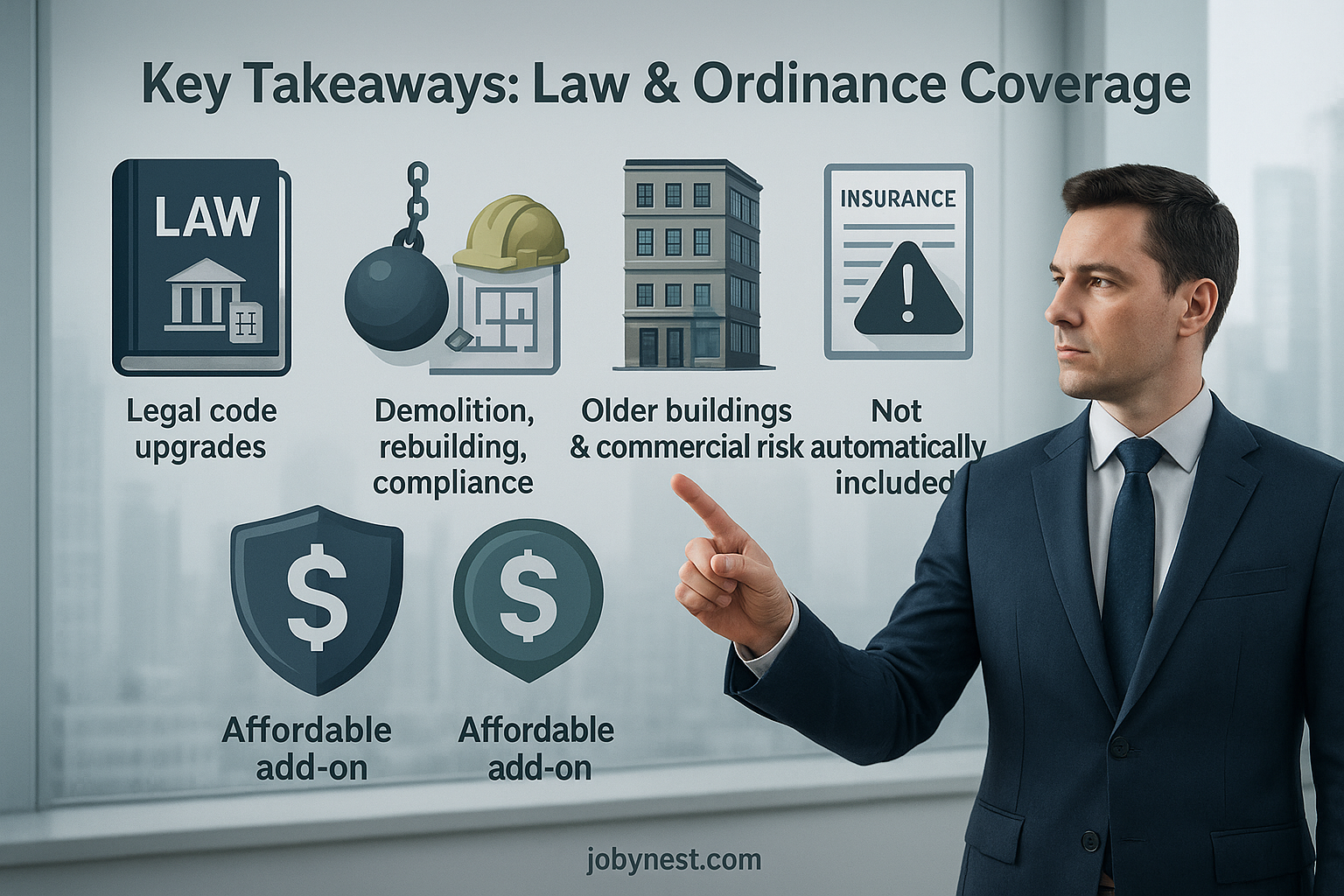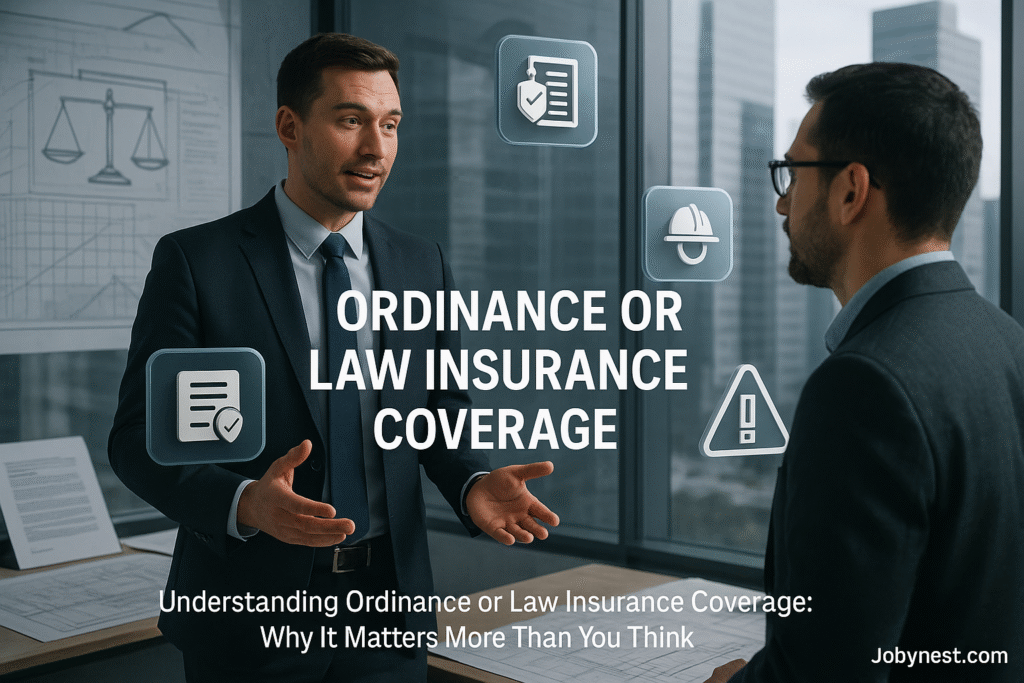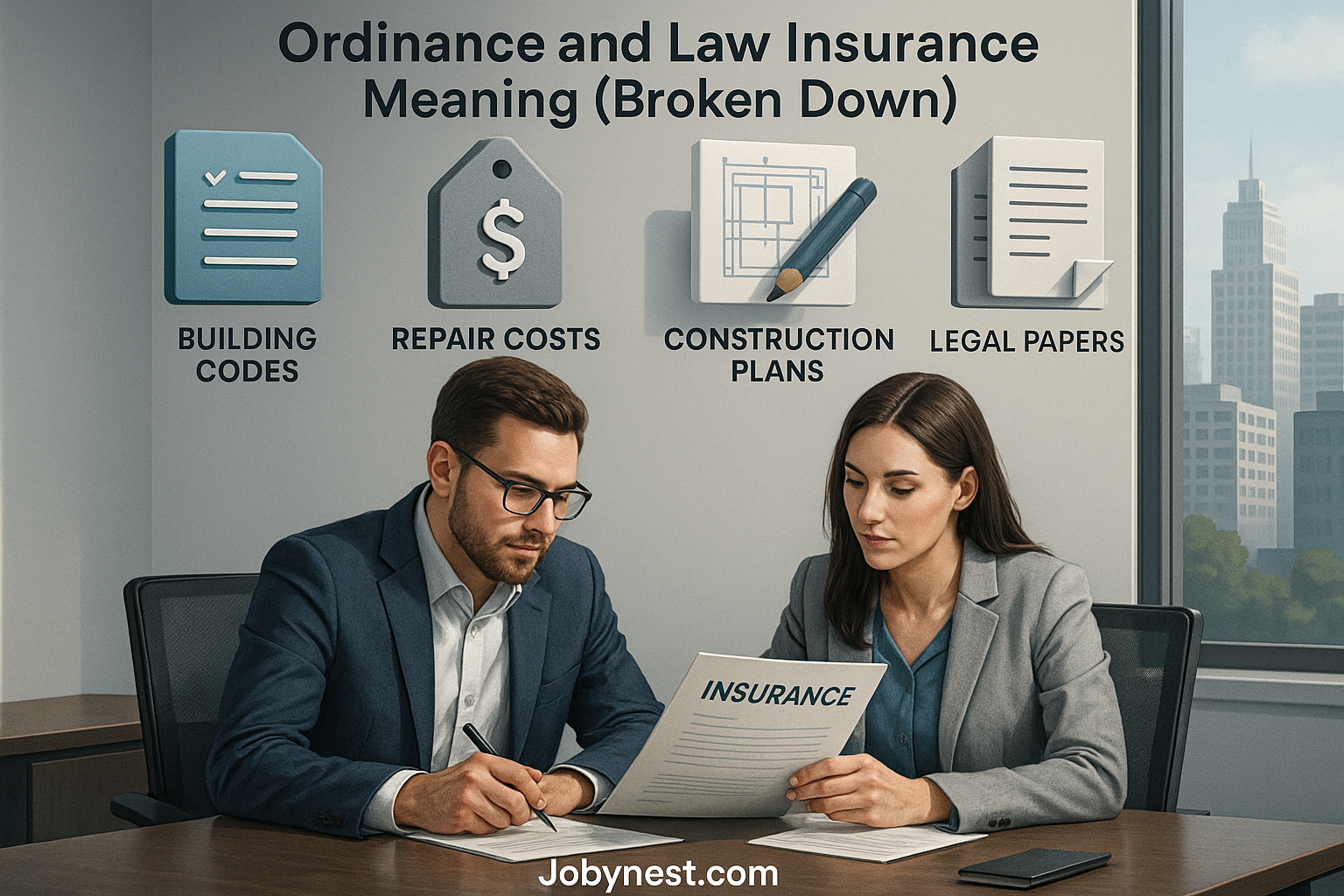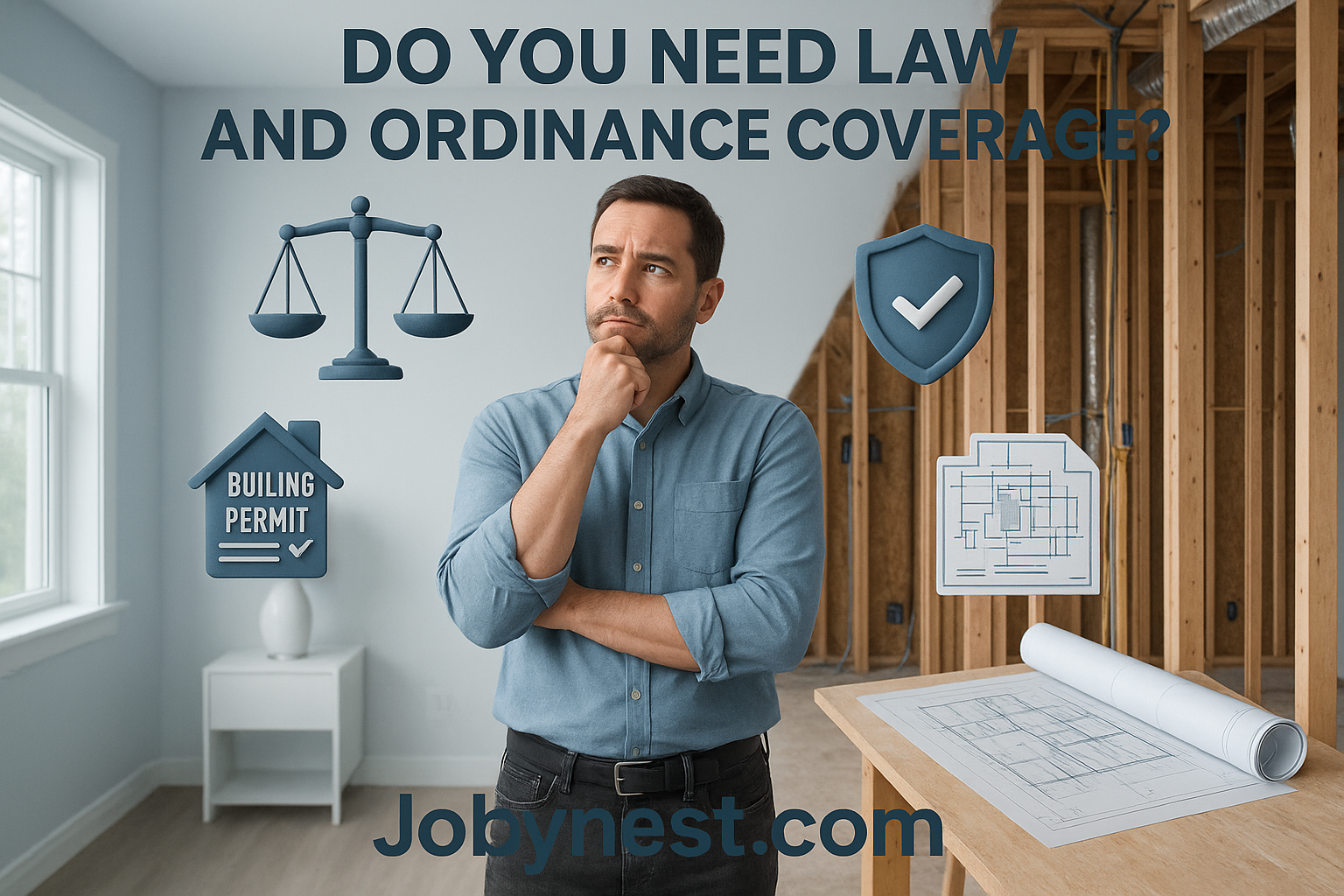Understanding Ordinance or Law Insurance Coverage: Why It Matters More Than You Think
Let’s imagine a scenario: Your commercial building suffers serious fire damage. You’re covered by property insurance—great! But then, you’re told that part of the undamaged structure must be demolished to meet new city building codes. That’s where your standard policy might stop short—and ordinance or law insurance coverage steps in.
Whether you’re a homeowner or own a commercial building, understanding this often-overlooked coverage can save you thousands—and spare you major headaches.
Cheap Car Insurance: The Ultimate Global Guide to Affordable and Reliable Coverage
how to get insurance to pay for eyelid surgery
Insurance for Churches in Alabama
How Much Is an Ultrasound Without Insurance?
5 Essential Reasons Why Your Business Needs Insurance
What Is Law and Ordinance Coverage?
Law and ordinance coverage (sometimes flipped as ordinance of law insurance coverage) is a specialized addition to your property insurance policy. It covers the extra costs of repairing or rebuilding a structure according to current building codes and laws.
In simpler words: If your property is damaged and new building codes require costly changes, this coverage helps you pay for them. Without it, you’re left footing the bill.
Why Does This Coverage Matter?
Buildings age. Codes evolve. What was up to code 15 years ago may now be outdated—even illegal. After a major loss, you could be legally required to:
-
Demolish part (or all) of the undamaged structure
-
Upgrade wiring, plumbing, HVAC, or foundation
-
Rebuild with fire-resistant materials or eco-compliant designs
All these requirements cost money—and property insurance ordinance coverage ensures you’re not caught off-guard.
Ordinance and Law Insurance Meaning (Broken Down)
If insurance jargon makes your head spin, here’s a breakdown of what ordinance and law insurance typically covers:
1. Coverage A: Loss to the Undamaged Portion
If part of your building is damaged, and the city mandates you tear down the rest (even if it’s perfectly fine), this coverage pays for that “extra” loss.
2. Coverage B: Demolition Costs
Covers the expense of demolishing the undamaged part of the building.
3. Coverage C: Increased Cost of Construction
Pays the difference between rebuilding your property as it was and upgrading it to meet today’s codes.
Example: You suffer partial fire damage. The city requires you to install a sprinkler system throughout the entire property. That’s an added cost—covered here.
Ordinance Coverage Explained with a Real-World Example
Let’s say you own a commercial property that was built in 1995. A portion of the roof collapses due to a storm.
-
Your standard commercial property policy covers the repair to the collapsed area.
-
The local ordinance requires the entire roof be replaced with hurricane-resistant materials.
-
Additionally, you’re now required to install rooftop solar panels due to new sustainability laws.
Your out-of-pocket cost just skyrocketed—unless you had commercial property ordinance coverage in place. This coverage would absorb those extra, law-mandated costs.
Do You Need Law and Ordinance Coverage?
If your building is older than 10–15 years, or located in a region with evolving building codes, this coverage isn’t just helpful—it’s critical.
Here’s who especially needs it:
-
Owners of older homes or buildings
-
Commercial landlords and real estate investors
-
Property developers and managers
-
Anyone with partial insurance coverage on the current rebuild value
Don’t assume your regular policy has you fully protected. It probably doesn’t include these legal compliance costs unless you specifically add them.
Commercial Property Ordinance Coverage: Why Businesses Shouldn’t Ignore It
For business owners, commercial property ordinance coverage is especially vital. Local building codes for commercial spaces are often stricter than residential ones. Fire suppression systems, accessibility compliance (ADA), seismic upgrades, and environmental codes can all come into play.
Not being able to reopen your business quickly—or at all—because of unexpected upgrade costs can be financially devastating. This coverage helps you get back to business, legally and safely.
 Key Takeaways
Key Takeaways
-
Law and ordinance coverage covers costs related to legal code upgrades after a property loss.
-
It includes demolition, rebuilding, and compliance costs.
-
Older buildings and commercial properties are especially at risk.
-
Most standard policies don’t automatically include this coverage.
-
Adding it is often affordable—and can be financially life-saving.
Frequently Asked Questions (FAQ)
What is ordinance or law coverage in property insurance?
Ordinance or law coverage is an insurance endorsement that helps pay for the cost of complying with updated building codes or local laws when repairing or rebuilding your property after a covered loss.
Is law and ordinance coverage included in standard homeowners insurance?
Typically, standard homeowners insurance policies do not include ordinance or law coverage. It must be added as an endorsement or rider to your policy.
What does ordinance or law coverage pay for?
It usually covers:
-
Demolition of undamaged parts of a building
-
Rebuilding to meet current construction codes
-
Additional materials or labor due to new regulations
Who needs ordinance or law insurance?
Anyone who owns an older home or commercial building should consider this coverage. It’s especially important if the local building codes have changed significantly since your structure was built.
How much does law and ordinance coverage cost?
It depends on:
-
Your insurance provider
-
The location and age of your property
-
Local building code stringency
Typically, it’s relatively inexpensive compared to the costs it covers in the event of a loss.
Is ordinance and law coverage required by law?
No, it’s not legally required, but many mortgage lenders recommend it, especially for older properties. It’s also highly advised by insurance professionals.
Can ordinance and law coverage help with green building upgrades?
In some cases, yes. If local codes require energy-efficient or sustainable upgrades (like solar panels or low-flow systems), this coverage can help cover those added expenses—if specified in the policy.
What’s the difference between ordinance and law coverage and code upgrade insurance?
They are essentially the same thing, just different terms. Both refer to the insurance coverage that pays for compliance with current building regulations after a covered loss.
Final Thoughts: Protecting Your Property the Smart Way
Building damage is stressful enough. Don’t let outdated insurance leave you struggling to meet today’s building codes. Ordinance of law insurance coverage is one of those things that’s easy to overlook—until it’s too late.
Talk to your insurance agent. Ask:
-
Is law and ordinance coverage included in my policy?
-
How much coverage do I have for code-related upgrades?
-
Is the amount sufficient to cover a full rebuild to today’s standards?
Sometimes a small increase in premium now can save you six figures later.





